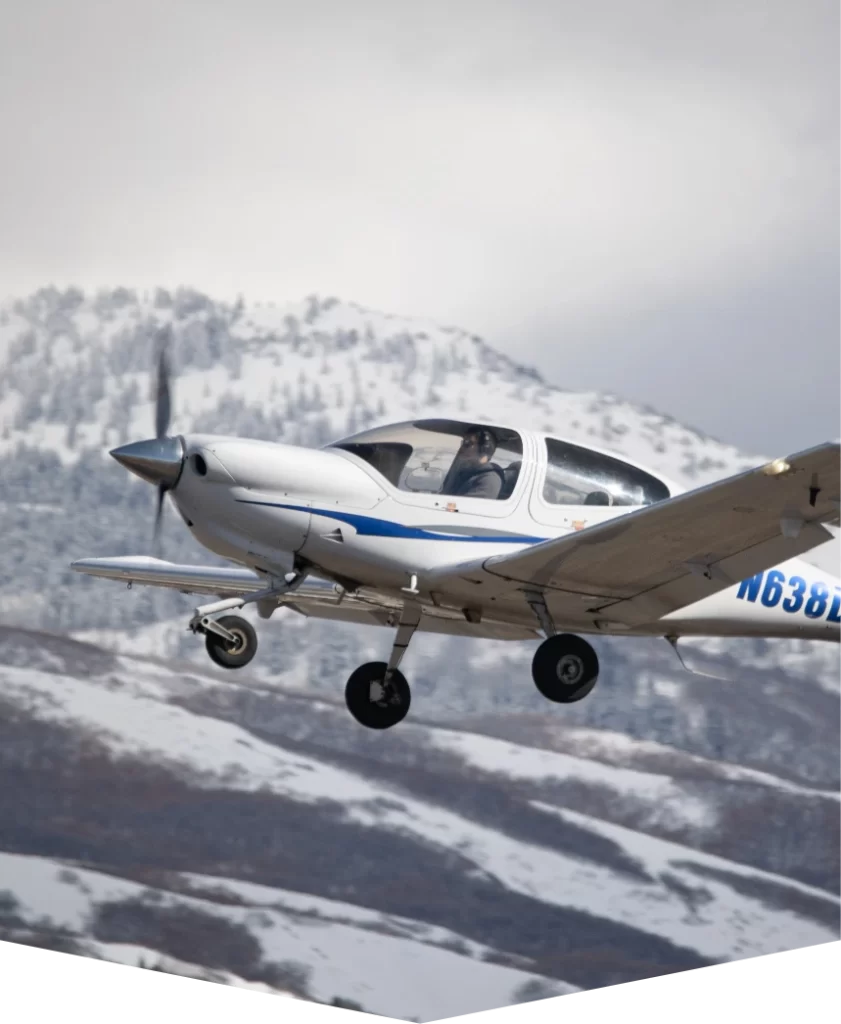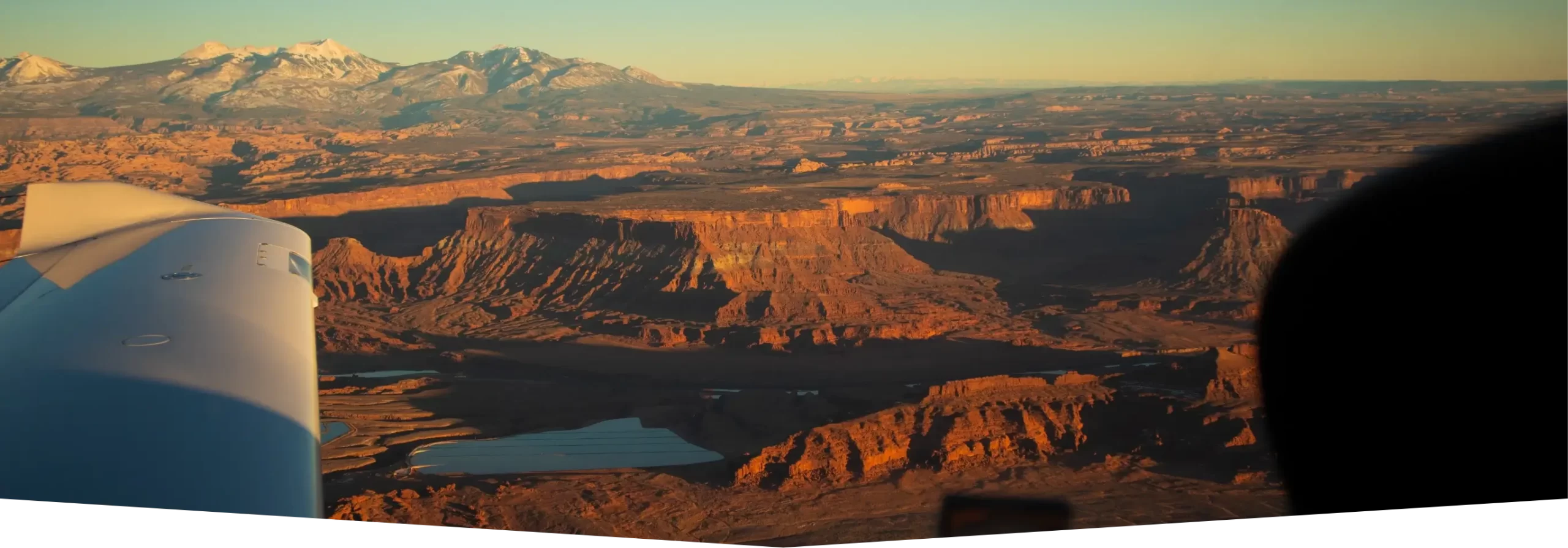- You have items in your cart!
FAR Part 141 Approved for Examining Authority
Certified Flight Instructor (CFI) program
Estimated Completion Time:
Ground School: 1 Month
Teach & be Taught Program: 1 month
Flight Training: 1-2 Months
Estimated Cost:
$13,000 - $14,000
Class Commitment:
Ground School: Monday-Friday, 9am-12pm or 1pm-4pm (variable by month)
Flight Training: 3-4 hours/lesson, five lessons per week (min)
Becoming a Certified Flight Instructor is one of the best ways to continue your piloting skillset while aiding in the development of future aviators
Program Requirements
- Current commercial pilot certificate
- FAA Medical Certificate
- Criminal History Report
- Personal Driving Record
- Proof of Citizenship
- A valid driver’s license
- A negative Panel Five drug screen
- The last three pages of their most recent logbook.
Minimum Completion Requirements
Must have previously obtained a commercial pilot certificate to enroll in the FLT Academy CFI Program.
Resources
Description
At FLT Academy, we believe great pilots create great instructors—and our Certified Flight Instructor (CFI) Program is built to produce both. Whether you’re looking to build flight time toward your airline goals or share your passion for aviation with the next generation of pilots, becoming a CFI is one of the most valuable and rewarding steps in your aviation journey. This rigorous and structured program, based in Utah, prepares you to pass the FAA checkride and thrive as a confident, capable flight instructor.
Ground Training: Preparing for FOI and FIA Knowledge Exams
Your CFI training begins with a dedicated ground course designed to help you master the fundamentals of instruction. This portion of the program focuses on the core knowledge areas required for the Fundamentals of Instruction (FOI) and Flight Instructor Airplane (FIA) FAA knowledge exams. Led by experienced instructors, the course covers:
Learning theory and teaching techniques
Student evaluation and progress tracking
Aeronautical decision-making and risk management
Instructional communication skills and lesson planning
Regulations and responsibilities specific to flight instruction
Passing both the FOI and FIA knowledge tests is a prerequisite for moving into the next phase of the program.
Teach & Be Taught: Immersive Instructional Simulation
After successfully completing the written exams, students enter FLT Academy’s unique Teach & Be Taught program. This phase simulates real instructional scenarios—both on the ground and in the air—giving you hands-on experience in explaining aviation concepts, guiding decision-making, and correcting flight technique. You’ll learn to:
Break down complex topics into teachable segments
Conduct pre- and post-flight briefings
Identify and address student weaknesses
Develop professional communication and leadership skills
This immersive environment ensures that you’re not just flying at a high level—you’re teaching at one too.
Flight Training: Hone Your Skills and Prepare for the Checkride
With a solid foundation in instructional technique, you’ll begin focused flight training to sharpen your own skills and prepare for the CFI practical test. This stage includes:
Demonstrating and teaching all required maneuvers
Refining your ability to fly from the right seat
Practicing mock instruction and scenario-based training
Preparing for the oral and flight components of the FAA checkride
FLT Academy’s experienced flight instructors provide the mentorship, structure, and feedback you need to meet and exceed FAA standards.
Why Become a CFI at FLT Academy?
Instructing is one of the most effective ways to build flight time, deepen your aviation knowledge, and open the door to future airline opportunities. At FLT Academy, our CFI program doesn’t just check boxes—it builds well-rounded, professional instructors equipped to make a lasting impact. As Utah’s leading flight school, we’re committed to producing safe, skilled, and confident flight instructors who are ready to train the next generation of aviators.
“A student pilot is only as good as the instructor they learned from.”
Requirements, Cost, and Timeline
Students pursuing their Certified Flight Instructor (CFI) certificate at FLT Academy can expect a total cost of approximately $13,000-$14,000. This price covers:
Flight time and instructor hours
CFI Ground school
FAA knowledge tests (FOI & FIA)
Books and training materials
FAA practical exam (checkride) fee
Access to our “Teach & Be Taught” instructional simulation program
The full program is designed to be completed in approximately 3 to 4 months, depending on student availability, scheduling, and training pace.
CFI Prerequisite Requirements
Before enrolling in the CFI Program, students must already hold a Commercial Pilot Certificate. This ensures incoming instructors have the flight experience and foundational knowledge necessary to succeed in both the training and practical teaching phases of the course.
At FLT Academy, we’re committed to helping future instructors become safe, knowledgeable, and confident educators. Our structured program, experienced staff, and professional environment make us a top choice for CFI training in Utah and beyond.
PROGRAM BENEFITS
FLT Academy’s Certified Flight Instructor (CFI) Program is built for pilots who want to accelerate their careers, gain real instructional experience, and stand out in a competitive industry. From our immersive training model to our upcoming Examining Authority, our program offers a wide range of benefits for future CFIs:
1. Skip the Wait: In-House CFI Evaluations and Certifications
FLT Academy will soon be granted Examining Authority for the CFI program—allowing us to conduct in-house CFI evaluations. This eliminates the current 6+ month backlog for FAA checkride scheduling and ensures a faster, more predictable path to certification.
2. Accelerated, Structured Training
Our FAA-approved Part 141 CFI curriculum is designed to be completed in just 3–4 months, providing an efficient and effective route to becoming a professional flight instructor.
3. Real-World Teaching Practice with Teach & Be Taught
Before instructing actual students, you’ll participate in our Teach & Be Taught program—an immersive, simulation-based experience that gives you hands-on practice in both ground and flight instruction scenarios.
4. Flight Time Building Toward Airline Requirements
Earning your CFI certificate opens the door to building time quickly and affordably. Many graduates go on to work as instructors at FLT Academy, helping others learn to fly while building the hours needed for airline employment.
5. One-on-One Instruction and Expert Mentorship
Our experienced instructors provide individualized attention and personalized coaching throughout your training. You’ll benefit from direct mentorship from professionals who are passionate about helping you succeed.
6. Realistic Pricing
The estimated program cost of $13,000-$14,000 includes 25 flight hours, ground school, FOI and FIA knowledge tests, FAA checkride, books, and materials—so you know exactly what to expect with no hidden fees.
7. Train at Utah’s Top-Rated Flight School
With a reputation for excellence, a modern training fleet, and strong industry partnerships, FLT Academy offers the ideal environment to become a confident, skilled flight instructor ready to take the next step in your aviation career.


PROGRAM COMPARISON
FLT Academy’s Certified Flight Instructor training program is unquestionably the best available. Our focus is not on “fast-track” training; we make sure every student in our CFI program is well equipped with true knowledge and practical understandings of the concepts surrounding aviation as opposed to rote-level memorization.
TESTIMONIALS
Trustindex verifies that the original source of the review is Google. I really love the structure and support that FLT Academy offers. Great program and great staff.Trustindex verifies that the original source of the review is Google. I took it as a refresher with my student pilot son . I've been flying about 54 years and it was well worth it.Trustindex verifies that the original source of the review is Google. Great peopleTrustindex verifies that the original source of the review is Google. You won’t find a better place to get your training! Everyone at FLT has been extremely professional and have been as motivated as I am to complete every stage. I was one of the people that has been interested in aviation my whole life and just never took the plunge to do it. Take my word that making that leap with FLT Academy was the best decision I’ve made! My only regret was not doing it 10 years ago. But thanks to FLT I will have a long and enjoyable career doing what I love! I promise you won’t be disappointed!Trustindex verifies that the original source of the review is Google. My personal experience with FLT Academy so far has been beyond amazing. I just want to point out how careful and thorough these guys are. I had my FLT orientation class today and it is amazing to see how much care and planning went into just this, and to have the opportunity to meet with Jason (CEO) and meet his incredible staff. I have heard rumors that FLT is the best of the best and from what I have seen so far, I believe that to be true.Trustindex verifies that the original source of the review is Google. I’ve been working with Joseph. He’s been very helpful and is always available to answer my questions and provide guidance.Trustindex verifies that the original source of the review is Google. I won't be a student for 3 or so years. So I went in to see what they had to offer and for some general advice on a career path. They were extremely helpful and experienced. I will be going here in the future.Trustindex verifies that the original source of the review is Google. So far it’s been pretty good! They are organized and so kind here! They really want to help you succeed and will give you the help you need!
FREQUENTLY ASKED QUESTIONS
Here are answers to the ten frequently asked questions about FLT Academy's Certified Flight Instructor program:
To become a certified flight instructor, FLT Academy requires students to have previously obtained their commercial pilot’s license and meet the specific requirements outlined by the aviation regulatory authority in your country. These requirements often include a minimum flight experience, such as a certain number of flight hours and pilot-in-command time.
The time it takes to become a certified flight instructor can vary depending on factors such as your prior flight experience, availability for training, and the flight school’s curriculum. On average, FLT Academy CFI students complete this training in 3-4 months.
There are some instances where this is possible, but FLT Academy requires students enrolling in the CFI program to have earned their commercial pilot license previously.
You must be at least 18 years of age to become a certified flight instructor.
FLT Academy’s course covers topics such as instructional techniques, aviation regulations, flight maneuvers, and teaching methodologies. Additionally, you will need to pass a flight instructor knowledge test and demonstrate your flying skills during a practical flight test.
Factoring in all expected training costs, FLT Academy CFI students can anticipate approximately $16,000 to become a Certified Flight Instructor.
Becoming a flight instructor opens up various career opportunities in the aviation industry. Apart from working as a flight instructor at flight schools or universities, you can progress to positions such as airline pilot, corporate pilot, flight school manager, check airman, or even start your own flight training business. The experience gained as a flight instructor serves as valuable groundwork for advancing in the aviation field.
Job opportunities for flight instructors can be found through various channels. Networking within the aviation community, attending aviation job fairs, exploring online job boards and aviation-specific websites, and contacting flight schools directly are effective strategies for finding flight instructor positions. It’s beneficial to stay informed about industry developments and build a professional network to increase your chances of finding suitable job opportunities.
The responsibilities of a flight instructor involve providing flight and ground instruction to student pilots, evaluating their progress, developing training plans, and ensuring compliance with aviation regulations and safety standards. Day-to-day duties may include conducting pre-flight and post-flight briefings, demonstrating flight maneuvers, teaching theory and concepts, assessing and grading student performance, and maintaining accurate training records. Additionally, flight instructors often serve as mentors, guiding and supporting students throughout their aviation journey.
GET IN TOUCH WITH AN ADVISOR TODAY
Contact Form
"*" indicates required fields

